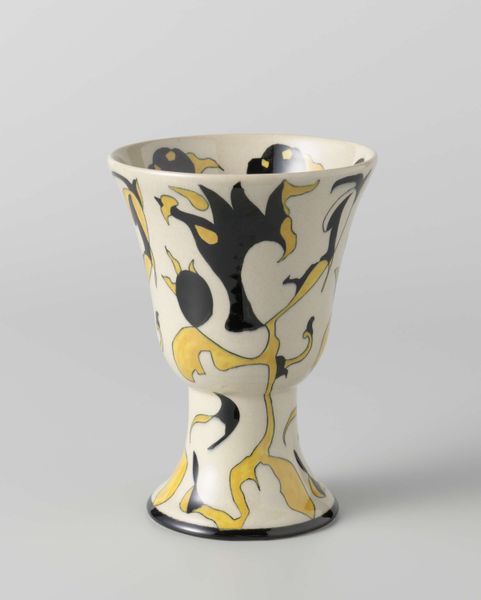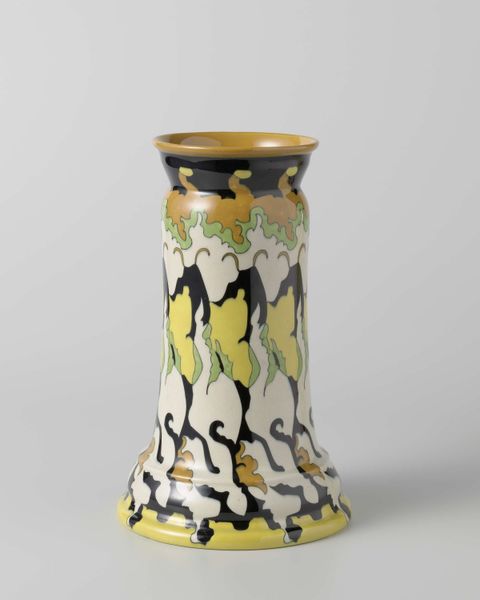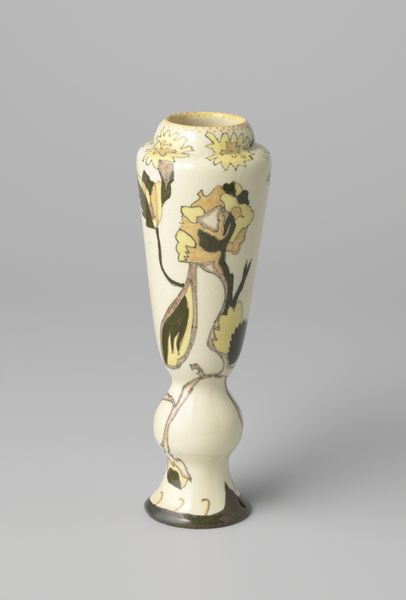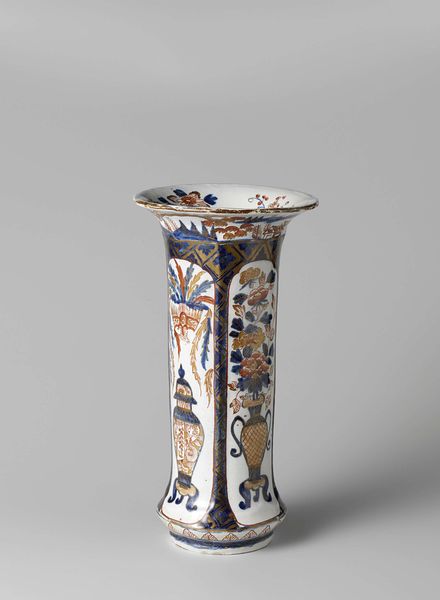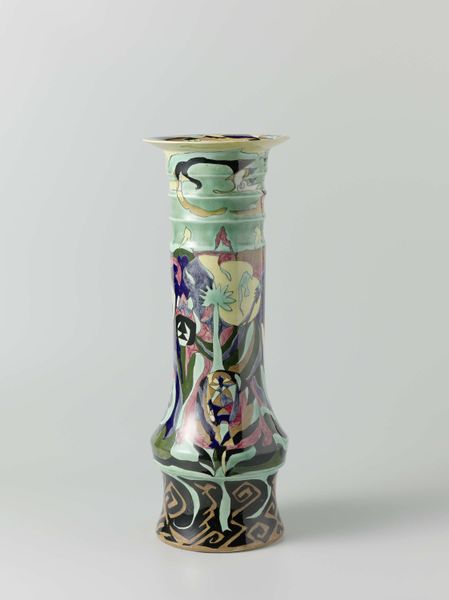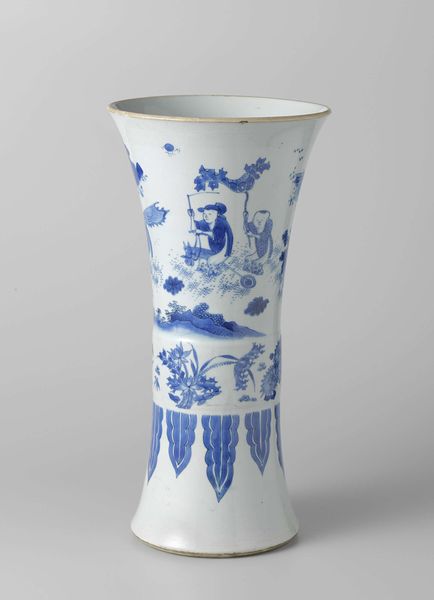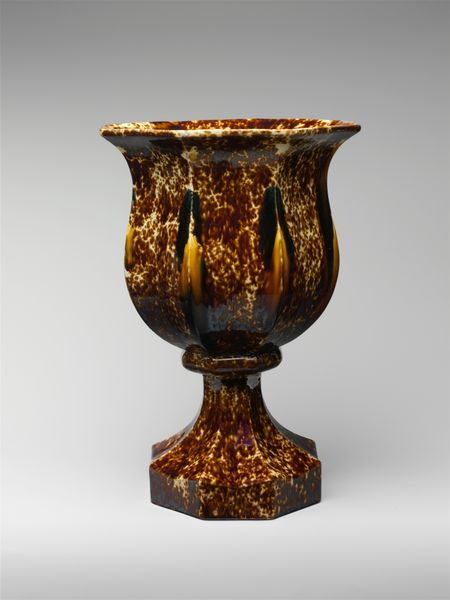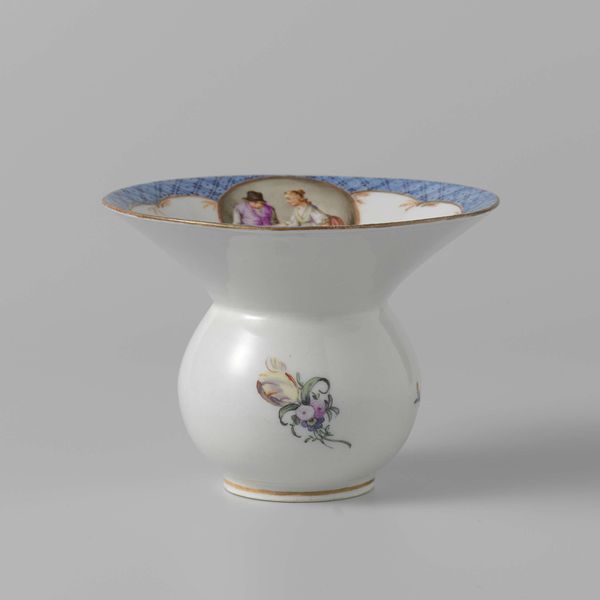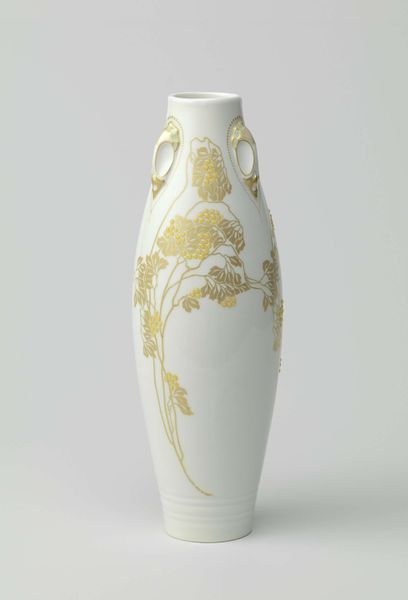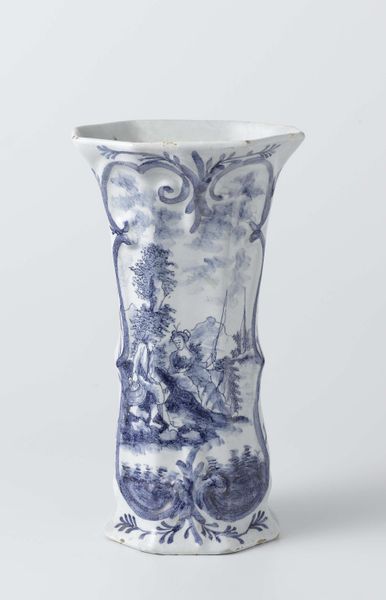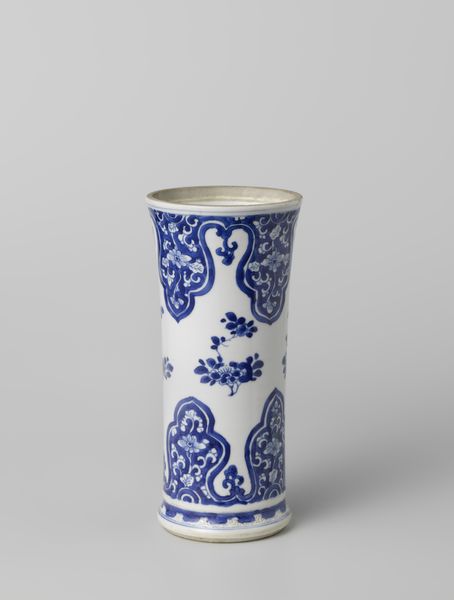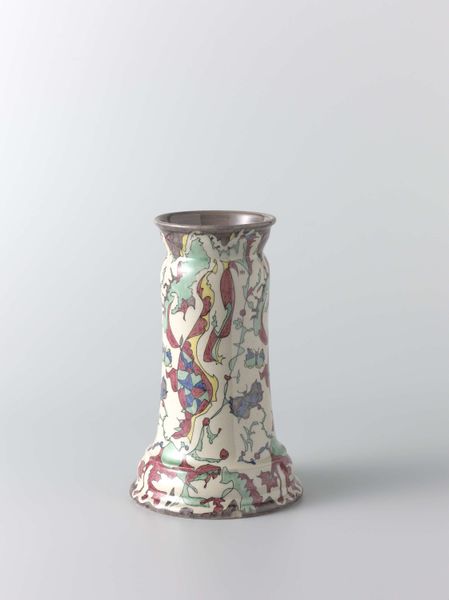
Copyright: Rijks Museum: Open Domain
Editor: Here we have a pair of earthenware vases, titled 'Two tulip vases with the \u2018Spichtig\u2019 (Spindly) pattern', crafted around 1925 by N.V. Plateelbakkerij Ram. I find the stylized floral motif quite striking. What’s your interpretation? Curator: I'm immediately drawn to the materiality and the labor embedded in these vases. Consider the process: from sourcing the earthenware, shaping it, applying the "Spichtig" pattern—likely a transfer print given the industrial context of N.V. Plateelbakkerij Ram—to firing and glazing. Editor: So, it’s less about the "artistic vision" and more about the production line? Curator: Not necessarily "less about," but broadened to include it. These vases sit at an interesting intersection. They present as decorative objects, meant for display and consumption. Their "art" lies in their very manufacture; the design is secondary to its creation, and their place within the decorative arts market, reflecting middle-class aspirations. It blurs boundaries, doesn’t it? Is it 'high art', or simply applied art for mass consumption? Editor: That’s fascinating. So, you’re saying understanding how they were made – the materiality and manufacturing techniques – is key to understanding their artistic merit? Curator: Precisely. We need to move beyond aesthetic appreciation alone, and towards an understanding of how these objects functioned within the social and economic landscape of the 1920s. Consider the artist's, designer's, and factory worker’s hands. How does their combined labor change our appreciation of Art Nouveau's typical themes like the natural world represented on the vase? Editor: I see your point. It certainly changes my perspective, focusing on the labor and materials involved. Thanks for shedding light on that. Curator: Indeed, focusing on how these objects were actually made, helps ground our understanding of both art and history, in more ways than one.
Comments
No comments
Be the first to comment and join the conversation on the ultimate creative platform.

